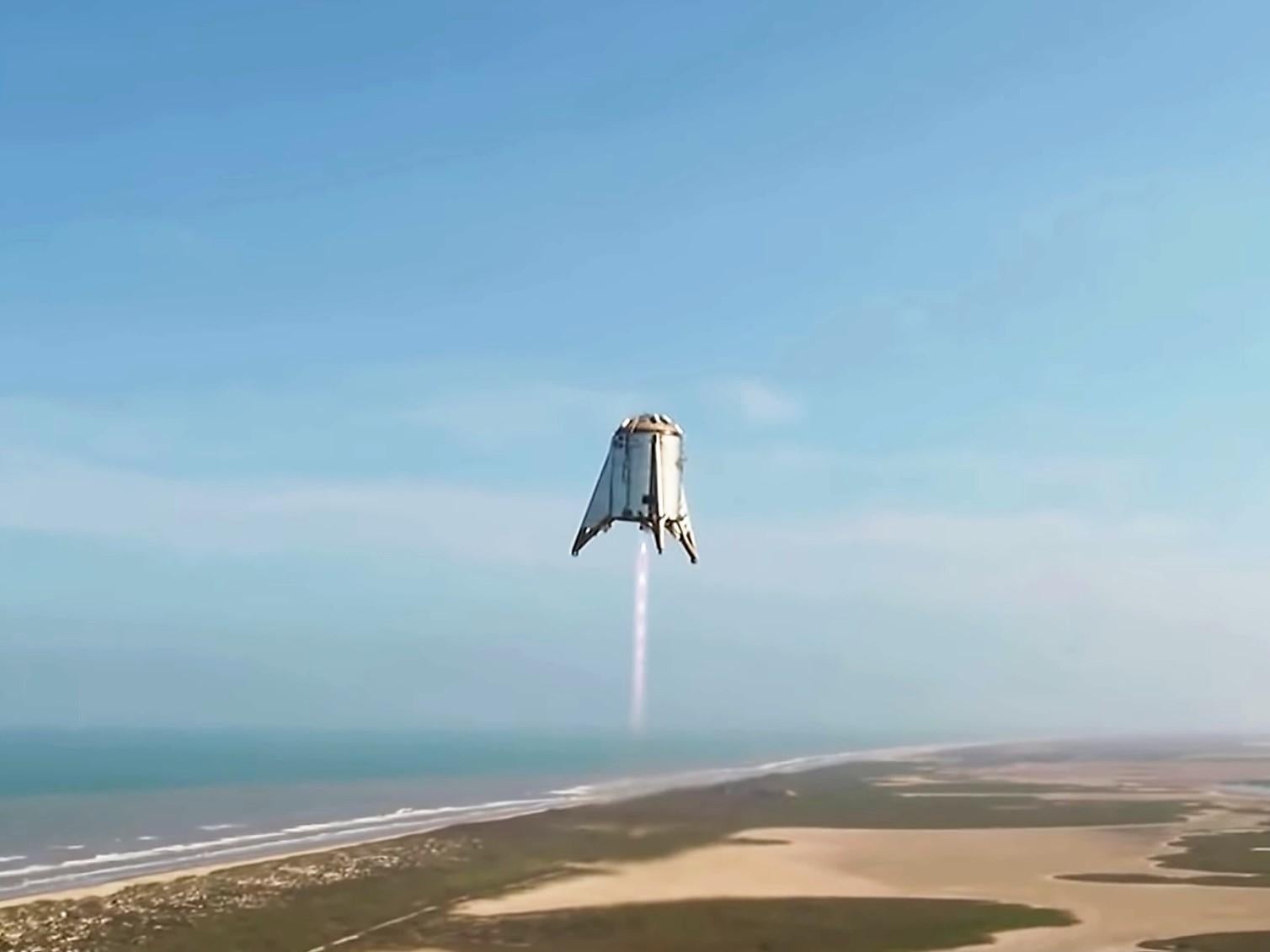SpaceX shoots Starhopper rocket 150 metres into the sky and now aims to use it to send people to Mars
Elon Musk hopes to ferry people to the Red Planet in 2024
Your support helps us to tell the story
From reproductive rights to climate change to Big Tech, The Independent is on the ground when the story is developing. Whether it's investigating the financials of Elon Musk's pro-Trump PAC or producing our latest documentary, 'The A Word', which shines a light on the American women fighting for reproductive rights, we know how important it is to parse out the facts from the messaging.
At such a critical moment in US history, we need reporters on the ground. Your donation allows us to keep sending journalists to speak to both sides of the story.
The Independent is trusted by Americans across the entire political spectrum. And unlike many other quality news outlets, we choose not to lock Americans out of our reporting and analysis with paywalls. We believe quality journalism should be available to everyone, paid for by those who can afford it.
Your support makes all the difference.SpaceX has successfully tested its Starhopper rocket, which it hopes will one day transport up to 100 people to Mars.
The test flight in Boca Chica Beach in Texas lasted just one minute but saw the spacecraft lift 150 metres into the air before landing on a separate launch pad.
It is the second Starhopper test in the space of a month, with the first test resulting in the rocket failing to launch. The success of the latest test means this was the last flight for Starhopper, as more advanced test flights are planned for the future.
The Starhopper tests were designed to better understand the feasibility of SpaceX’s Starship rocket – a giant spacecraft that the private space firm aims to use to ferry people around the Solar System.
Starship is being built to launch from Earth on top of SpaceX’s Super Heavy rocket. Once it arrives to Mars it will use its own onboard engines to navigate its way safely to the Martian surface. One of the biggest breakthroughs of the Starhopper and Starship is that they run on liquid methane and liquid oxygen, which can both be found and manufactured on Mars.
Images of the 55-metre Starship rocket have already been shared by SpaceX boss Elon Musk, who has likened its design to rockets built by Nasa in the 1950s.
"Starship looks like liquid silver," Mr Musk tweeted last year, revealing that it was assembled using a mix of stainless steal and alloys.
According to Mr Musk's timeline, manned missions to Mars could take place as soon as 2024, though his projections have been known to be delayed in the past.

Following the latest Starhopper tweets, Mr Musk tweeted: "Congrats SpaceX team! One day Starship will land on the rusty sands of Mars.
The billionaire entrepreneur has frequently stated his belief that humanity needs to become a multi-planetary species in order to ensure its survival.
He recently outlined plans to make the Red Planet more habitable for humans. They involve heating up Mars and altering its atmosphere, either by blasting it with nuclear weapons, or by pointing giant mirrors at its surface.

Join our commenting forum
Join thought-provoking conversations, follow other Independent readers and see their replies
Comments